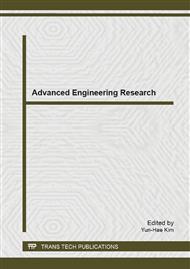p.755
p.760
p.764
p.768
p.775
p.780
p.784
p.788
p.792
Effect of Fe on the Microstructure and the Thermal Storage Performances of High-Silicon Aluminum Alloy
Abstract:
The influence of Fe on microstructure and the expansion coefficient and thermal conductivity of Al-30 wt.% Si alloy was studied. Results show that the primary silicon morphology and size changed significantly after joining the Fe, by angular blocky primary silicon sheet or plate into small pieces and then into a polygonal large lump, edge and angle are passivated. As the content of Fe is 0.3 wt.%, material expansion coefficient and high thermal conductivity. Later, with the increase of the content of Fe, alloy point defect and line defect, surface defect and large area defect increase, the thermal conductivity of materials and inflation performance declined. When the content of Fe is 0.1 wt.%, materials with high thermal conductivity and low thermal expansion coefficient, the heat storage performance impact is minimal.
Info:
Periodical:
Pages:
775-779
Citation:
Online since:
April 2014
Authors:
Keywords:
Price:
Сopyright:
© 2014 Trans Tech Publications Ltd. All Rights Reserved
Share:
Citation:


